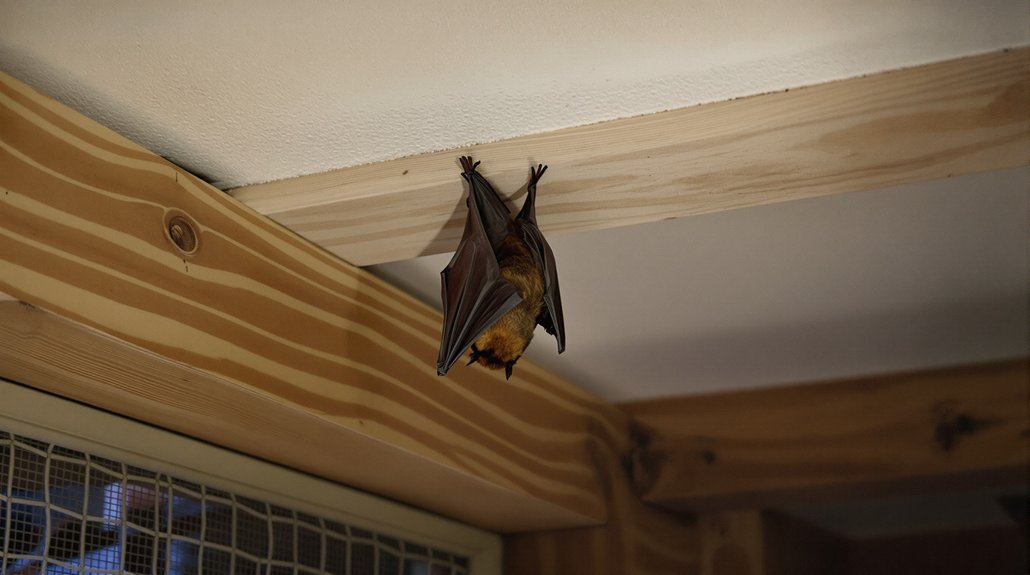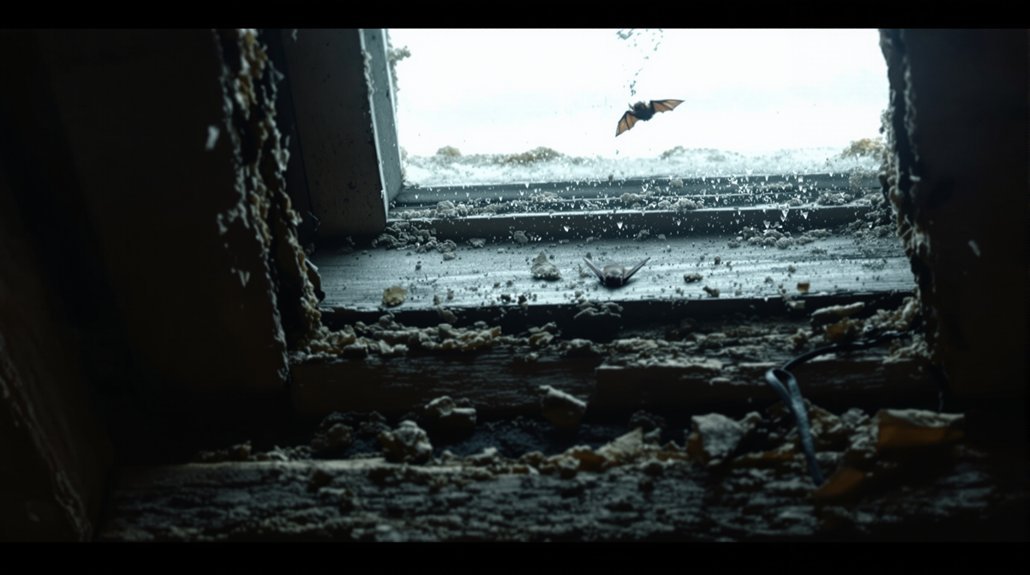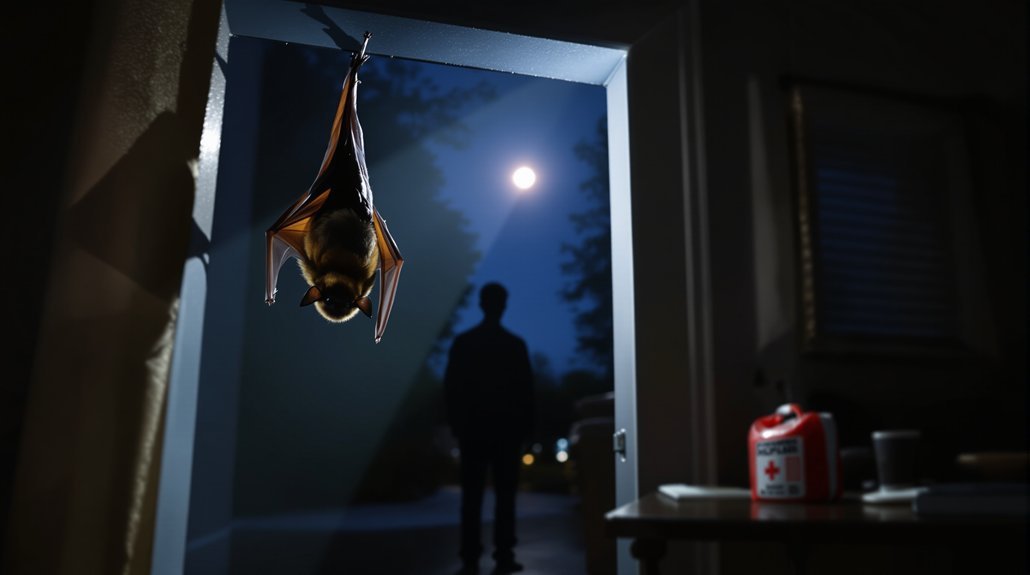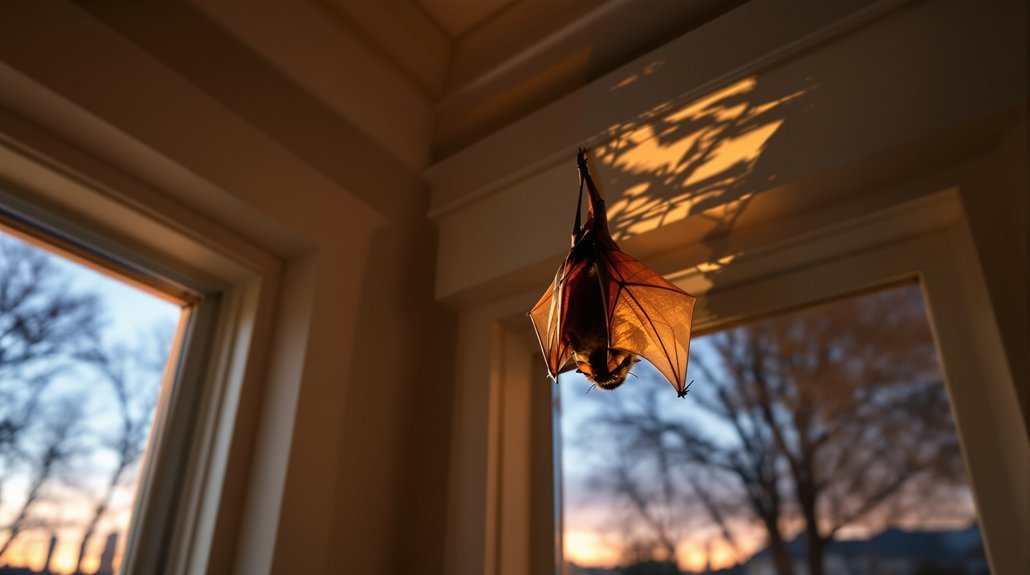Finding one bat in a house often indicates a larger issue. Bats usually roost in groups, so seeing one could mean more are nearby. They prefer warm, dark places, making homes appealing. Additionally, signs of infestation may go unnoticed. It is important to address this quickly, as bats can pose health risks. To learn how to manage a bat situation effectively, consider the information provided in the following sections.
Key Article Highlights
- A single bat in the house may indicate a larger population nearby, as bats often roost in colonies.
- Signs of infestation, like droppings or noises, suggest more bats may be present, especially in attics or hidden areas.
- Bats seek warm, dark spaces, meaning if one is found inside, others might be roosting nearby or entering through the same entry point.
- Prompt action is crucial, as the presence of one bat can lead to increased health risks and property damage over time.
- Regular inspections and sealing entry points can help prevent more bats from entering the home in Des Moines.
Understanding Bat Behavior and Habitats

What drives bats to choose certain habitats? Bats have specific roosting preferences that influence their habitat selection. They often seek warm, dark places to rest and raise their young. Common roosting spots include caves, trees, and buildings. During bat migration, these animals travel to find suitable environments for food and shelter. Factors such as food availability, climate, and safety from predators play key roles in their choices. Bats prefer areas with abundant insects, as this ensures a steady food supply. As they migrate, they may adjust their roosting preferences based on seasonal changes and local conditions. Additionally, their choices are influenced by the availability of entry points in buildings, which can lead to human-wildlife conflicts. Understanding these patterns helps in learning how to coexist with bats in residential areas, such as in Des Moines.
Signs of a Bat Infestation

Bats may choose to roost in homes when natural habitats are limited. Signs of a bat infestation can often be subtle but noticeable. Homeowners might observe bat droppings, known as guano, near entry points or in attics. Additionally, squeaking or rustling noises, especially at dusk, may indicate bat activity. The presence of urine stains can also suggest roost preferences within the home. During bat migration, they may seek shelter in small crevices or openings. Homeowners should be vigilant if they see one bat, as it could signal a larger group nearby. Recognizing the signs of infestation early can help prevent extensive property damage and health risks. Understanding these signs is essential for addressing potential infestations effectively and ensuring a safe living environment.
Health Risks Associated With Bats

The presence of bats in a home can pose several health risks to residents. Bats are known carriers of various bat diseases that can affect humans. One significant concern is rabies transmission. If a bat bites a person or if saliva from a bat enters an open wound, there is a risk of rabies infection. This viral disease is often fatal if not treated promptly with a vaccination. Additionally, bat droppings, known as guano, can harbor harmful fungi that may lead to respiratory issues. It is vital for residents to be aware of these health risks and to take necessary precautions. Addressing a bat presence quickly can help minimize potential health hazards associated with these creatures.
How to Safely Remove Bats From Your Home
When dealing with bats in a home, it is important to approach the situation carefully and safely. Bats can use echolocation to navigate, making it vital to avoid startling them. Here are steps to safely remove bats:
- Identify Entry Points: Look for gaps or cracks where bats may enter due to bat migration.
- Seal Openings: Close potential entry points after ensuring all bats are outside.
- Use a Bat House: Provide an alternative shelter to encourage them to roost outside.
- Contact Professionals: If the situation is overwhelming, seeking expert help is advisable for safe removal.
Following these steps helps guarantee both human safety and respect for the bats, allowing for a peaceful resolution.
Preventing Future Bat Visits
How can homeowners guarantee that bats do not return after removal? The key is bat exclusion. This process involves sealing all entry points in the home. Homeowners should inspect roofs, walls, and attics for gaps or cracks. Once identified, these openings must be properly closed to prevent bats from accessing urban roosts. Using materials like metal mesh or caulk can be effective. Additionally, homeowners can install bat houses away from their homes, providing a safe roosting space for bats while keeping them from entering living areas. Regular maintenance and checks are also important to ensure that no new entry points develop. By taking these steps, homeowners can markedly reduce the chances of future bat visits.

